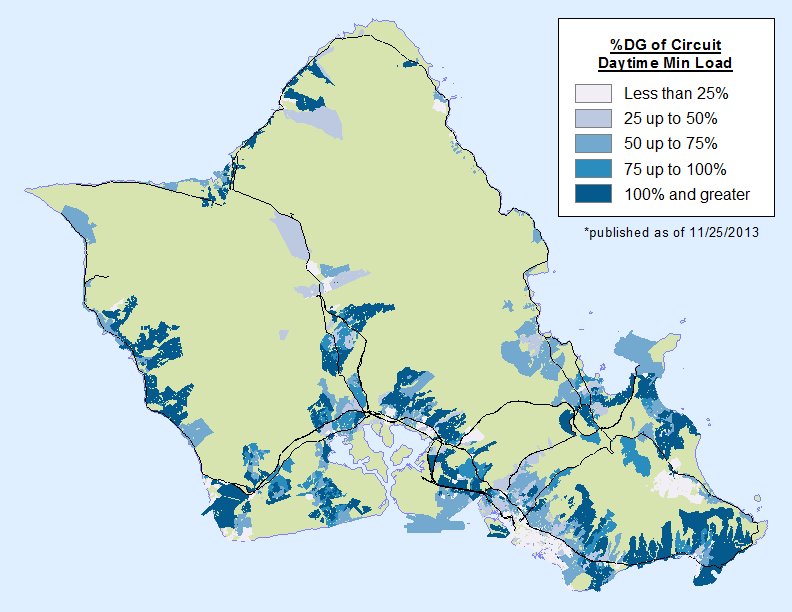By Sherilyn Wee and Makena Coffman
This UHERO 101 intends to clarify some of the rate and policy aspects of PV in Hawai‘i, and explores the two opposite driving forces of PV adoption.
PV is an attractive investment in Hawai‘i where electricity rates are almost four times the national average. Rising electricity prices and falling system costs have largely driven the installation trend, with installations roughly doubling annually since 2007. Moreover, residential PV is quite cost-effective because it’s installation costs are up to 65% subsidized. In addition, there is ongoing support of PV in the form of Net Energy Metering (NEM). NEM gives households retail rate for their unused PV generation, rather than the wholesale rates paid for other sources of energy. As such, what many do not realize is that distributed PV can actually raise electricity rates rather than lower them. While PV customers benefit from providing their own energy and selling excess electricity back to the grid, non-PV customers are consequently likely to pay relatively more. Also, although PV certainly reduces the use of fossil fuels, it is not necessarily proportionately. Since PV is an intermittent source of energy, the utility also has to run spinning reserves to ensure reliable electricity at any given time.
To add to the confusing world of PV, Hawaiian Electric Industries recently modified its policy— both the primary metric used to determine circuit saturation and the process of connecting to the utility’s power grid. Prior to September 2013, distributed PV generation was limited to 15% of peak load on each circuit that, if exceeded, required the NEM applicant to pay for an interconnection requirements study (IRS). However this limit was not enforced for smaller systems under 10 kW (i.e. residential systems). However, now the metric of daytime minimum load (DML) is used to determine circuit saturation. The policy does not distinguish between small and large systems, and requires that written consent be obtained from the utility prior to installation. 1 The details are summarized as follows:
1.
Circuits below 75% of DML are not subject to an IRS or circuit
upgrades. These projects should receive notice to proceed within 35
business days.
2. Circuits that fall between 75-99% of DML
are not subject to an IRS but may require circuit upgrades. Depending
on whether a supplemental review is required in addition to the initial
technical review, these projects may receive a response anywhere from 35
to 85 business days.
3. Circuits beyond 100% of DML may
require an IRS and circuit upgrades. Completing an IRS study may take up
to an additional 165 calendar days on top of the initial and
supplemental review.
As a result, on one hand, the policy change has slowed down solar installations, due to circuit upgrades. For projects above 75% of DML, customers have to first wait to hear whether a circuit upgrade is necessary and then, if deemed necessary, another several months for conducting the circuit upgrade. In addition to the long waiting period, potential customers face extra costs for circuit upgrades, which are allocated on a prorated basis and divided according to the size of the systems to be installed.
At the same time, the policy change provides further motivation for those customers who have been considering a PV system and whose homes are on circuits below 75% of DML, to join the race to install PV. 2

BLOG POSTS ARE PRELIMINARY MATERIALS CIRCULATED TO STIMULATE DISCUSSION AND CRITICAL COMMENT. THE VIEWS EXPRESSED ARE THOSE OF THE INDIVIDUAL AUTHORS. WHILE BLOG POSTS BENEFIT FROM ACTIVE UHERO DISCUSSION, THEY HAVE NOT UNDERGONE FORMAL ACADEMIC PEER REVIEW.
[1] In the past, submitting the NEM agreement was often the last paperwork step of the installation process. Applying for the City and County building permit was usually the first step, and now is applied for only after receiving approval to interconnect. Building permit approval takes about 20 business days.
[2] Previous state legislative discussions on reducing or phasing out the renewable energy investment tax credits have already commenced the “race” to install PV.